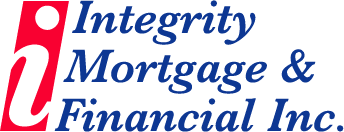Understanding VA Mortgage Loans in Colorado Springs, Colorado and Colorado If you are a veteran…
Yearly Housing Market Trends
Yearly Housing Market Trends
The housing market bubble that burst in 2008-2009 took many by surprise, with the bottom falling out of the market seemingly overnight. The good news is, the housing market recovery that followed starting in 2012 also came on quickly, with a rapid turnaround in housing prices and increased consumer confidence finally making a comeback, after several years of tumbling home values. The recovery process has since begun to level out, with the anticipation of future home price increases resuming a slow and steady rise, as in past years.
Since the value of real estate is directly tied to the strength of the surrounding economy, the stronger the economy, the more valuable the real estate in that area will be. Mid-year statistics in June of 2016 show unemployment in the U.S. at its lowest level since 2007, the overall economy experiencing modest growth, and inflation at just 1%, according to the US Bureau of Labor Statistics.
According to Fortune.com, homeownership rates are nearing a long-term, historical average of 64% or 65%. With data in for 2016 housing market activity, we can see some trends have emerged in recent years, since the market began its recovery.
• All 20 major U.S. cities experienced relatively strong house price hikes, with Portland posting the highest increase of 12.32% during the year to April 2016, according to Standard and Poor’s. It was followed by Seattle (10.67%), Denver (9.45%), Dallas (8.65%), San Francisco (7.77%), Tampa (7.77%), Atlanta (6.51%), Miami (6.44%), and San Diego (6.34%).
• Due to the strong rise in rental prices in most markets, buying a home is still more attractive than renting for many families.
• Lenders are able to offer conforming loans to borrowers who have trouble putting together a down payment of 20% of a home’s purchase price, thanks to recently relaxed guidelines from Fannie Mae and Freddie Mac.
• Smaller investors are turning away from the stock market and setting their sights on real estate, purchasing single-family homes or vacation rentals as investments.
• Fewer distressed properties are coming onto the market for sale. Numbers in this category dropped to 9.9% of sales in March 2016, down 2.7% from a year earlier.
• Smaller properties are continuing to gain in popularity, according to the National Association of Realtors (NAR). Between Baby Boomers seeking to downsize and first time home buyers looking for a more affordable investment, often closer to city centers, there is a growing demand for high-density housing such as townhouses, condominiums, patio homes, and cluster homes.
Experts predict that while home prices should continue to rise for some time to come, the days of year-over-year double digit price gains are likely behind us, with price increases returning to their typical slow and steady pace.
If you have questions about housing market trends, or would like to speak with one of our experts about a home mortgage loan, please feel free to give us a call here at Integrity Mortgage at (719) 638-0531, or contact us via email at info@integritymtg.com. We’d be glad to help you navigate the road to home ownership.

